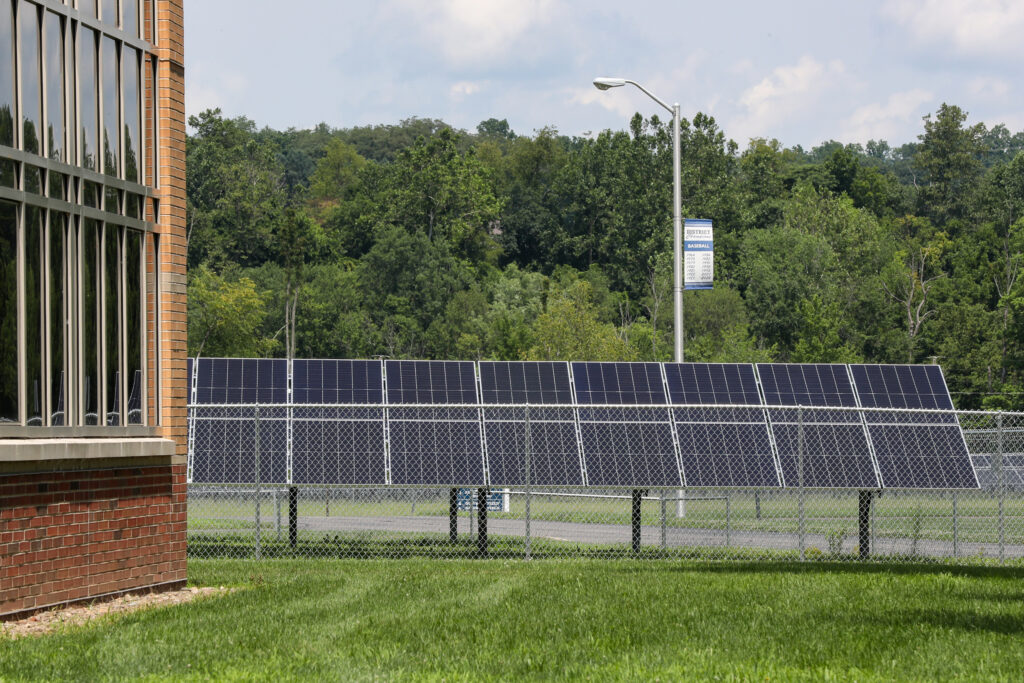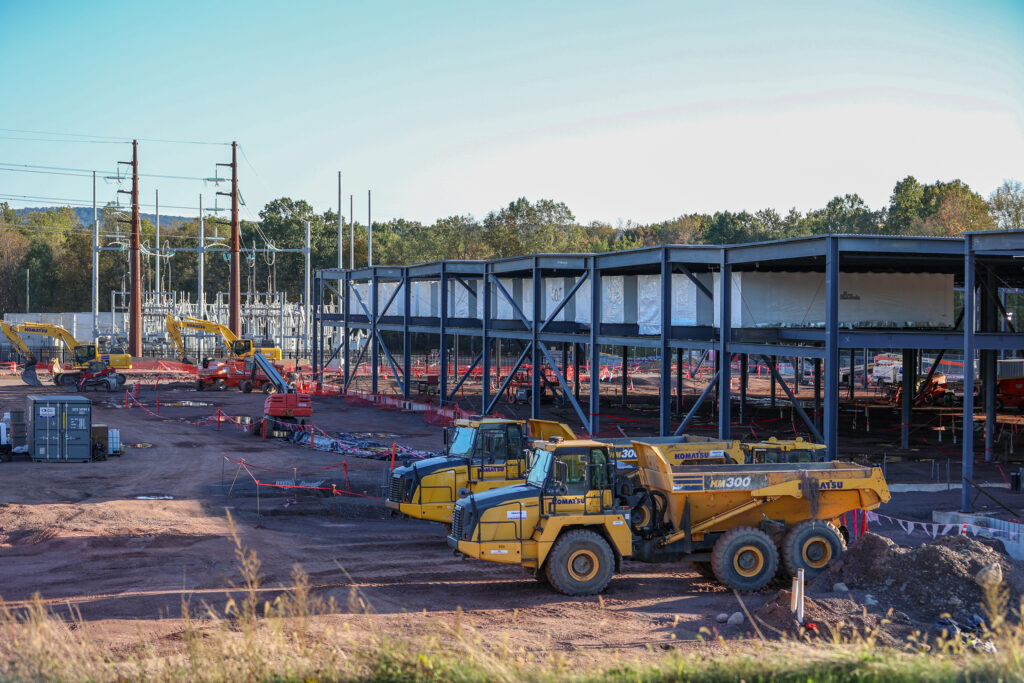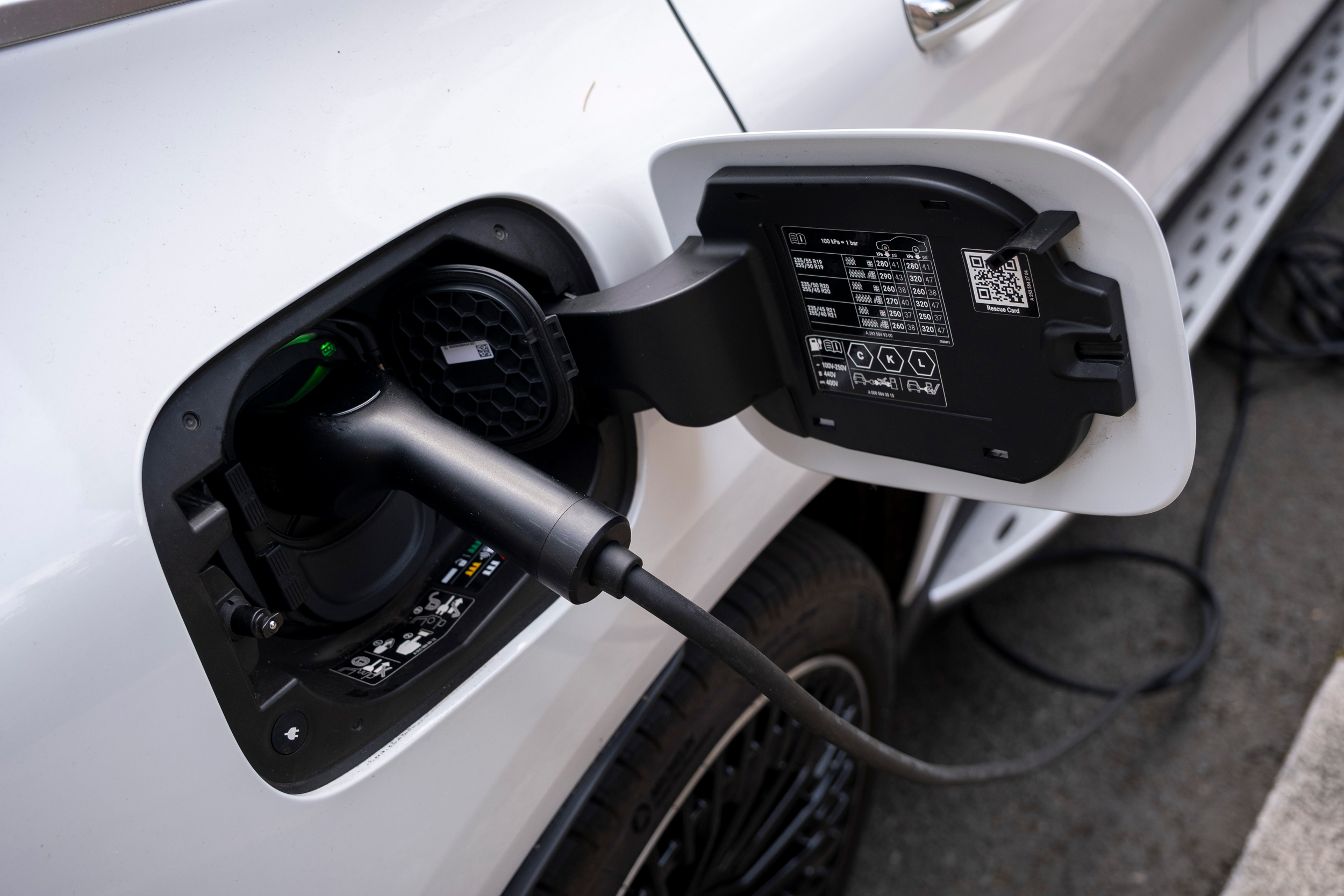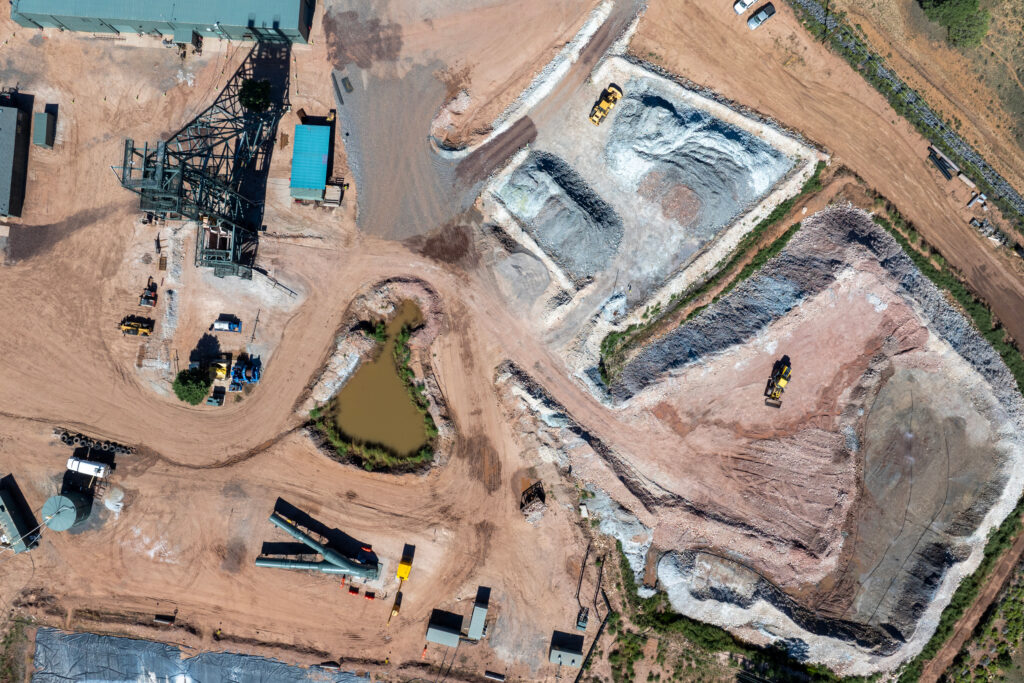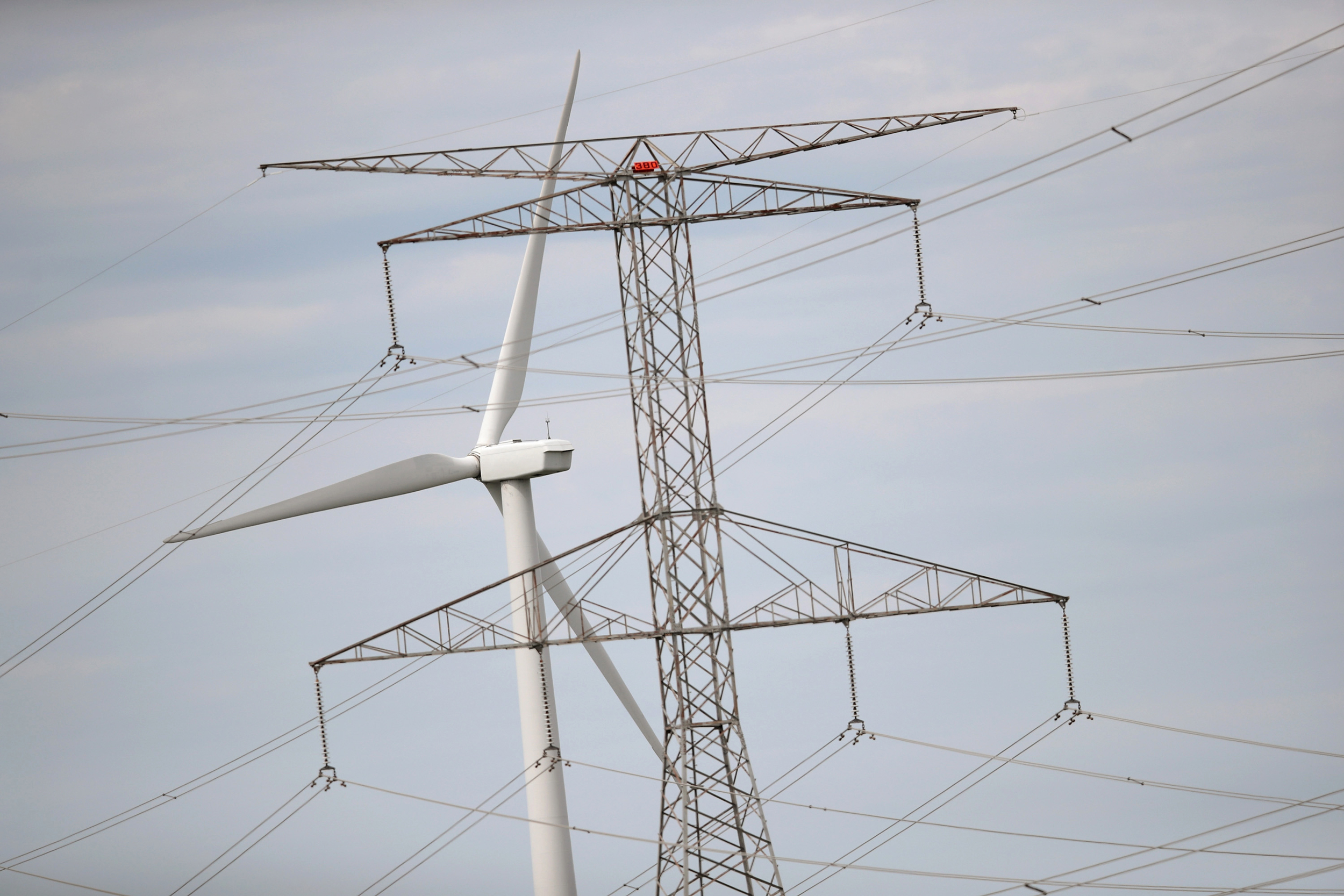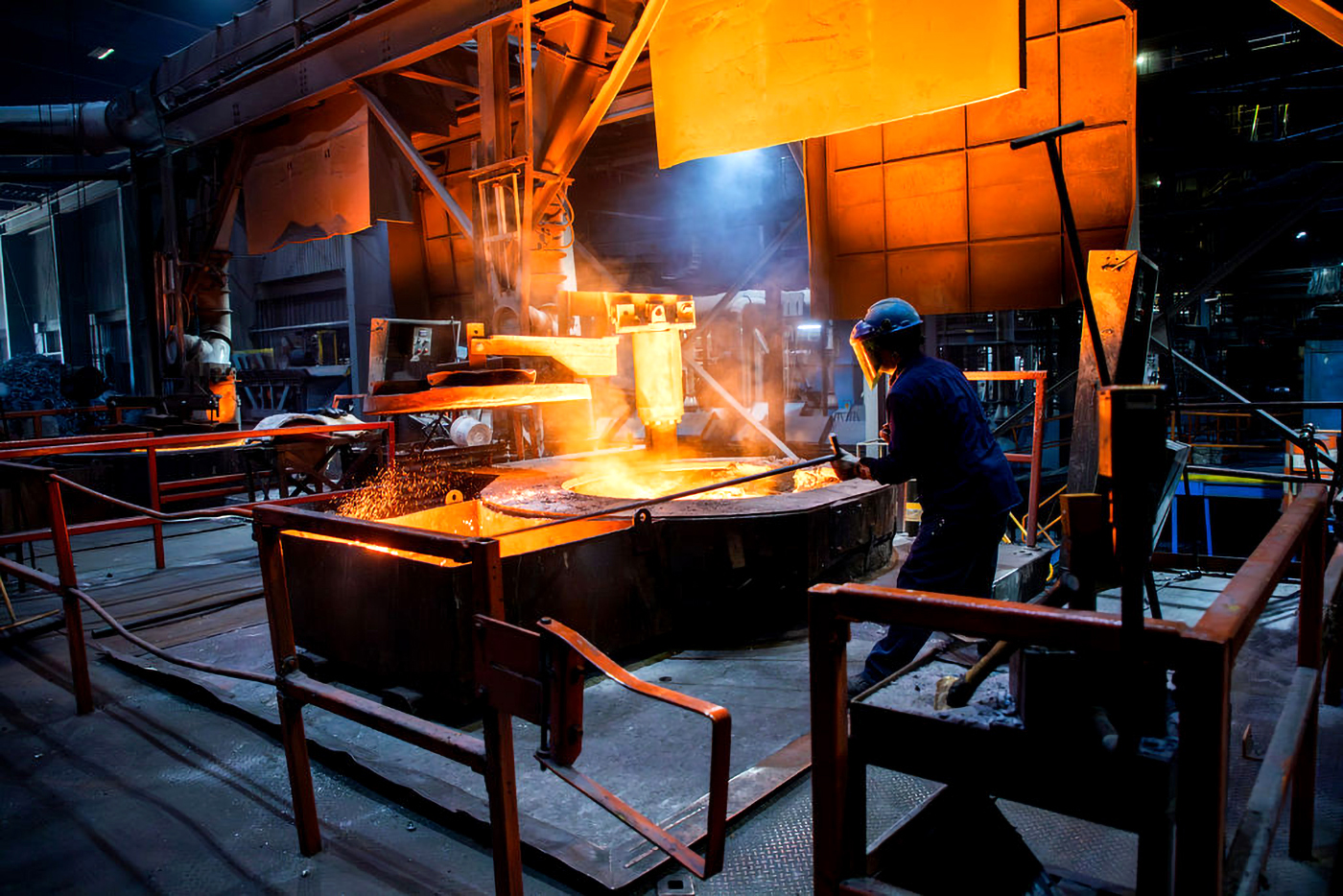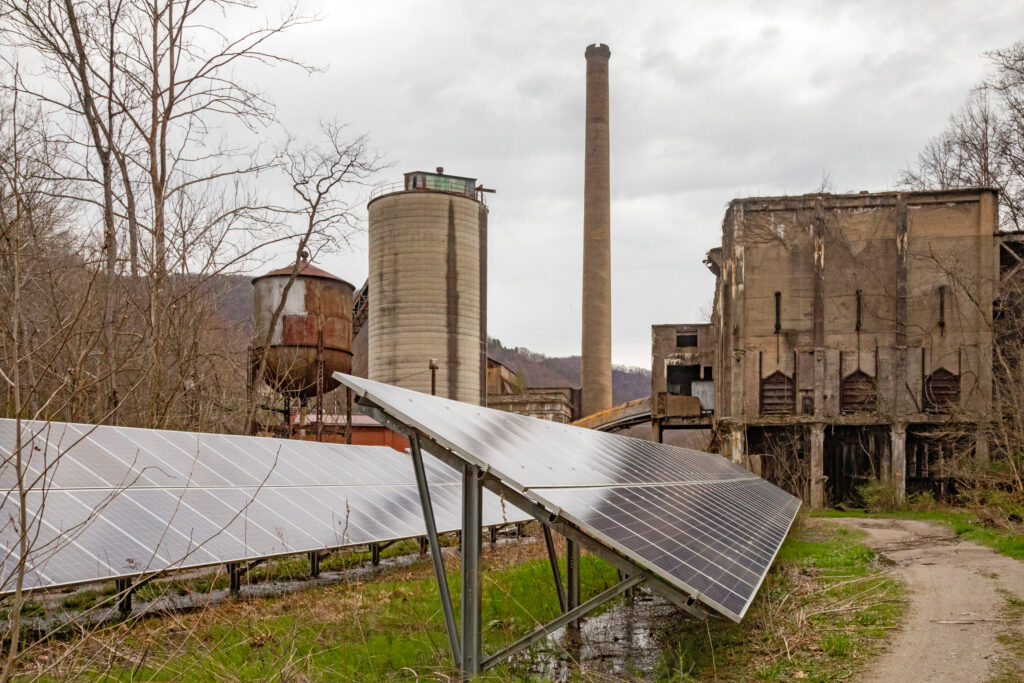In Carlisle, a sleepy town in the heart of Pennsylvania Trump country, solar energy appears to have escaped the black hole of partisan politics. Or at least, that’s been the experience of Carlisle Area School District superintendent Colleen Friend, who has met little resistance spearheading a project to install a solar array about the size of a football field at a local elementary school.
The project is itself the beneficiary of a political anomaly, the $25 million “Solar for Schools” initiative. The bill that created it last year made it through Pennsylvania’s divided state government even though basically nothing else on energy policy has reached the governor’s desk in recent years.
It also remains one of the few policy bright spots for clean energy advocates in the state budget deal struck on Wednesday, which saw the program re-upped for another year, even as Democratic leadership agreed to exit a potentially paradigm-shifting regional carbon cap-and-trade program.
Friend isn’t surprised that Solar for Schools proved a survivor in a budget battle that dragged on for months. The bill signing ceremony in Harrisburg last year was “very bipartisan,” she said. Her school district received $252,000 in funding for the ongoing project, and Friend now plans to apply for more.
“We already know the next building we’re going to put a solar array at,” she said.
But does distributed solar—the diffuse installation of small-scale arrays on the roofs and lawns of homes, businesses and municipal buildings—present a wider bipartisan opportunity to move climate policy forward in the acrimonious world of Pennsylvania politics?
Long a fossil fuel juggernaut with bountiful reserves of coal and gas, Pennsylvania at one point was also considered an innovator on renewable energy. But it has since fallen into position as a national laggard. Fights over fracking and former Democratic Gov. Tom Wolf’s move to join the Regional Greenhouse Gas Initiative, the interstate cap-and-trade program known as RGGI, had ground down any progress in the space to next to nothing.
On paper, distributed solar appears to have breakthrough potential. Solar for Schools’ wide bipartisan support last year followed what advocates describe as a herculean effort by its sponsor, state Rep. Elizabeth Fiedler. The Philadelphia Democrat and chair of the House Energy Committee toured the state to discuss its opportunities, focusing on economic benefits and reaching across the aisle.
Flora Cardoni, deputy director of the nonprofit PennEnvironment, helped champion the program and said it proved to be a rousing success in its first year, with 88 applications requesting $88 million in funding, more than three times what the budget allowed. Ultimately, 73 schools were awarded a total of $22.6 million in May.
“There’s clear demand, that more schools applied for the Solar for Schools grants than were able to receive an award,” Cardoni said. “We would just love to see even more schools follow their lead.”
Distributed solar also stands to benefit from deregulatory policy, a potential attraction for conservatives. Among five energy-related statehouse bills packaged under Democratic Gov. Josh Shapiro’s “Lightning Plan,” the one that promises to adjust regulations to facilitate “community energy” projects—picture neighbors subscribing to a local communal solar array—has garnered the most bipartisan support.
Distributed solar can also avoid perhaps the biggest hurdle to solar development in Pennsylvania at present: the backed-up queue of grid operator PJM Interconnection, which oversees large, utility-scale energy development. Utility-scale renewable projects are waiting years for approval to hook in, but distributed solar skips that step entirely.
Ron Celentano, president of the Pennsylvania Solar & Storage Industries Association, thinks it has high potential. He points to a 2018 analysis by the Pennsylvania Department of Environmental Protection that found rooftop solar could account for 10 percent to 35 percent of all solar power in the state by 2030, if lawmakers enact solar-friendly policies.
“I tend to push hard on [distributed solar], because it’s often a missed opportunity in a lot of areas,” Celentano said.
And yet, advocates wonder how much ground can be covered, especially in light of the new budget agreement. Cardoni believes that RGGI could have generated about $1 billion annually for Pennsylvania to invest in clean energy technologies while forcing a market shift toward renewables, an impact that dwarfs an additional $25 million slated for the second year of Solar for Schools.
In the lead-up to the budget breakthrough, advocates had also heard that Lightning Plan bills could be part of the negotiations. But in the end, there was nothing to suggest that any of them, including the community energy bill, would be brought up for a vote in the Republican-controlled Senate.
“We would need to get a lot of policies like that passed to make up for RGGI in terms of carbon reduction,” Cardoni said.
And even the calculus behind Solar for Schools is shifting. Advocates say that many school districts had planned to combine state grant money with federal financial incentives covering another 30 percent to 50 percent of costs, depending on demographic factors. But those credits are now scheduled to expire next year after the One Big Beautiful Bill Act rolled them back.
With a deadline to start construction looming next summer, Celentano said that timelines are getting tight for school districts to go through bidding and design, never mind finding a contractor in the midst of a rush.
Adding to the problem is what Celentano said are delays at Pennsylvania electric utilities such as PECO and PPL, which have their own waiting lines for applicants seeking to connect rooftop solar and other similarly sized ground arrays to the grid. PECO did not respond to requests for comment, but a spokesperson for PPL confirmed that approval for larger examples of such projects may take “one to three years, depending on complexity.”
“We remain committed to processing interconnection applications as quickly and efficiently as possible,” PPL spokesperson Dana Burns wrote in an email, adding that the utility is “actively working to minimize delays and prioritize transparency and communication with applicants.”
No schools districts have yet announced abandoning their plans, but Celentano said some clients have asked him to run new analyses on what costs will be without federal tax credits. He predicts many projects wouldn’t survive a scenario in which they lose up to half of their funding via federal incentives, and the impact on interest for a second year of funding remains unknown.
“There’s a little bit of concern to some of these schools: Are we going to make it?” Celentano said.
Bipartisan Opportunities
On paper, distributed solar has political potential across red and blue counties in Pennsylvania. In a September report analyzing the first year of Solar for Schools, PennEnvironment calculated that approximately 5,000 schools across the commonwealth have the physical capacity to install solar. Collectively, they would save a potential $342 million over the lifetime of the systems, while powering the equivalent of 187,000 homes and reducing carbon emissions by the equivalent of 300,000 cars.
“The rooftops of Pennsylvania’s roughly 5,000 schools are often flat and unshaded, making them excellent sites for solar panels,” the report noted.
What’s more, rural counties, with their often-abundant space, stand to benefit considerably. PennEnvironment calculated that Lancaster County, quintessential home of the Pennsylvania Dutch, had the second highest cost-savings potential, after Pittsburgh’s Allegheny County. And while the nonprofit found that the 20 counties that stand to save the most in total are the most populated, it is mostly rural counties that would save the most per school.
“That just speaks to the vast savings potential,” Cardoni said.
The 2018 Department of Environmental Protection solar potential report calculated that distributed solar would also employ more people than large “grid-scale” arrays, at about 3 to 5 jobs per megawatt hour installed, compared to less than 2.5 jobs.
In a high-end scenario where 35 percent of the state’s solar mix came from rooftop arrays, the analysis predicted the creation of more than 32,000 total jobs. That’s about triple the current number employed in Pennsylvania’s waning coal industry.
Fiedler, the Solar for Schools sponsor, said she leaned into the economic benefits of solar and sought the support of labor unions as she traveled across the commonwealth stumping for the program. It worked: In final votes on the legislation last year, 10 of 101 House Republicans and 21 of 28 Republican senators joined all Democrats in voting yes.
“We think as individual households the bills that we get are high,” Fielder said. “And they are, they’re going up. But for school districts it’s even more—add a couple of zeros on the end.”
Jim Gregory, a former three-term Republican state representative who is now executive director of the Pennsylvania Conservative Energy Network, said he also makes economic and reliability arguments when lobbying his former colleagues on supporting renewable energy. He believes the political gridlock on energy will have to give way soon, given dramatically escalating electricity rates for consumers in the state. He’s pitching solar as an important and quickly scalable option within an “all of the above” energy strategy, with the ability to take “pressure” off fossil fuel supplies.
“We can’t continue to do nothing. … The pain is going to overcome the fear that people have of a pipeline in their backyard on the Left, or a solar field on the farmer’s property next to theirs in rural Pennsylvania,” Gregory said.
But it’s not clear how much wider bipartisan support for solar truly exists in the legislature. Some efforts this year seem to have stalled out.
Democratic State Rep. Peter Schweyer’s community energy bill passed the House in May by a 114-89 margin, with more Republican support than Solar for Schools received. But the bill has remained in a Senate committee ever since, with no signs of movement even in the wake of a budget deal.
Democratic State Rep. Robert Merski, meanwhile, introduced a measure to put solar on municipal buildings like firehouses. But that legislation has remained stuck in a House committee since January.
And the cross-party coalition on these issues appears somewhat fragile.
State Rep. Craig Williams, a Republican from Delaware County in the Philadelphia suburbs, voted for both Solar for Schools and the community energy bill and said he believes there is a dire need to adjust state energy policy in the midst of rapidly rising costs.
“I’m trying to work across the aisle to get any form of generation online that’s clean and sustainable,” Williams said, adding he finds geothermal and nuclear particularly promising.
But Williams, a former PECO assistant general counsel, has also at times proved a thorn in the side of solar advocates, introducing amendments to legislation that they fear could negatively impact net metering, the way that owners of distributed solar panels receive financial compensation from utilities.
This story is funded by readers like you.
Our nonprofit newsroom provides award-winning climate coverage free of charge and advertising. We rely on donations from readers like you to keep going. Please donate now to support our work.
Donate Now
Williams said he thinks the current compensation system unfairly increases costs for non-solar owners, an issue utilities have also raised to state regulators. Solar advocates dispute that. Celentano said he’s pressed for evidence of such a cost shift, “and they can never show us the data.”
For Williams, discussions about advancing solar and community-generation policies are also part of an all-of-the-above strategy. He wants to see Democrats move off long-held positions against bringing new fossil fuel power plants online, citing concerns about power demand outstripping supply.
“There is a tremendous opportunity if we can get out of our own way,” Williams said.
What Next?
Numerous advocates said they believe Fiedler’s Solar for Schools program has benefited from a unique combination of her persistent efforts, fortunate timing and the non-controversial nature of saving school districts money. One former clean energy lobbyist, speaking on the condition of anonymity after taking a job with a public entity, said a one-off program with $25 million in the bank is more politically palatable than something with wider ramifications, like a community energy bill that could shift how electricity is generated and distributed in Pennsylvania.
“It’s a little bit of an easier selling point than saying, ‘Hey let’s create a whole new system of microgrids that the utilities see as an existential threat,’” the former lobbyist said, adding that he thinks supporters would be wise to focus on rising consumer costs. “I think that argument has not been made. And into that vacuum have come the utilities that quietly whispered in the ears of the Pennsylvania Senate to say, ‘Hey, this could hurt us.’”
The recent budget deal did little to boost hopes. Advocates note that a House vote on H.B. 501, the so-called PRESS bill that would elevate renewables in the state’s energy mix, has now been set for Monday, an apparent consolation prize to climate advocates upset about RGGI. But there’s no indication Senate Republican leadership will also bring it up in their chamber.
Similarly, the budget includes language that would clear the way for the state to use $156 million in federal “Solar for All” funding, which would install rooftop solar in low-income areas in Pennsylvania. But the fate of that Biden-era federal appropriation remains tied up in the court system after the Trump administration attempted to cancel it.
Sharon Pillar, executive director of the nonprofit Pennsylvania Solar Center, suggests that solar supporters may have better luck focusing not on the legislature but on the state Public Utility Commission, which has the power to draft new rules for utilities. In early November, the advocacy group Vote Solar launched a petition asking the commission to require more transparency on utilities’ solar connection queues and also create “clear, enforceable timelines” for applications.
“If the state can fix those things—if they’re willing to—then we can be moving this forward without a lot of other action,” Pillar said.
In an email, PUC spokesperson Nils Hagen-Frederiksen said the commission has “not been made aware” of any backlogs for small-scale projects like residential rooftop solar, which he said are often given same-day, automatic approval for standard designs. But larger, more complex commercial arrays, he said , take more time to process given cost and safety consideration, along with an application rush ahead of federal incentive sunsets.
“The Commission continues to review interconnection-related issues statewide to ensure that the process remains timely, transparent, and fair for all customers,” Hagen-Frederiksen wrote.
About This Story
Perhaps you noticed: This story, like all the news we publish, is free to read. That’s because Inside Climate News is a 501c3 nonprofit organization. We do not charge a subscription fee, lock our news behind a paywall, or clutter our website with ads. We make our news on climate and the environment freely available to you and anyone who wants it.
That’s not all. We also share our news for free with scores of other media organizations around the country. Many of them can’t afford to do environmental journalism of their own. We’ve built bureaus from coast to coast to report local stories, collaborate with local newsrooms and co-publish articles so that this vital work is shared as widely as possible.
Two of us launched ICN in 2007. Six years later we earned a Pulitzer Prize for National Reporting, and now we run the oldest and largest dedicated climate newsroom in the nation. We tell the story in all its complexity. We hold polluters accountable. We expose environmental injustice. We debunk misinformation. We scrutinize solutions and inspire action.
Donations from readers like you fund every aspect of what we do. If you don’t already, will you support our ongoing work, our reporting on the biggest crisis facing our planet, and help us reach even more readers in more places?
Please take a moment to make a tax-deductible donation. Every one of them makes a difference.
Thank you,



